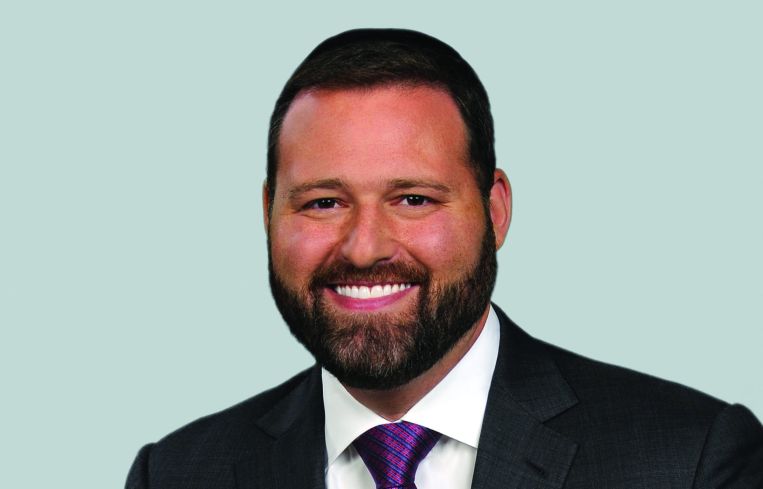Castle Lanterra’s Elie Rieder on Multifamily Finance and His Expanding Portfolio
By Matt Grossman September 27, 2018 2:54 pm
reprints
If on your next visit to Austin, Texas or Everett, Wash. you come across an out-of-place New Yorker making a keen pedestrian survey of residential neighborhoods’ sidewalks and traffic lights, there’s a good chance you’ve spotted Elie Rieder, the founder of Montebello, N.Y.-based Castle Lanterra Properties. The third-generation multifamily developer, taking inspiration from forebears who built middle-class housing in the New York area, has brought the Rieder name national, chasing value-add opportunities in growing markets from coast to coast. Taking a break from managing a portfolio that will soon include 8,000 apartments in nearly a dozen states, Rieder spoke with Commercial Observer at a Midtown coffee shop last month to describe his favorite markets, his keen study of millennial renters and his thoughts on how government policy helps and hurts affordable-housing developers.
Commercial Observer: How did you find your way into the multifamily business?
Elie Rieder: My mentors start with my grandfather. From the 1950s to the 1980s, he was a developer of rental communities for workforce housing. His thesis was that the middle class will always want to rent. As long as you can raise the rents faster than inflation, you’ll be very successful in that business model.
My father, he had a different spin. His approach was to buy existing C+ and B- assets with a gut-renovation strategy.
I’ve evolved to sort of combine those business plans with a value-add strategy that I think is the best of both worlds. I learned the best from both of them, and they allowed me to get my hands dirty with them.
What’s Castle Lanterra’s niche?
I focus on lighter value-add and heavy value-add, both. But I’ve been focusing a lot on strategies of income growth, economic growth, job diversity and following the millennials and baby boomers around the country, as opposed to being in the gateway cities. Today, Castle Lanterra has 6,500 apartments, and we’re growing quickly. We have 1,500 apartments under contract now.
You work out of an office in suburban New York, but your portfolio is very national, right?
Castle Lanterra, has a national footprint. We have a heavy concentration in the Northeast, but also a heavy concentration in Austin, Texas and other Texas submarkets like Corpus Christi. We also have a heavy concentration in the Denver and Boulder [Colo.] markets and the suburbs around those markets. There are also properties in Atlanta, in Florida, in Alabama and in several other markets.
And what drew you to that selection of cities?
I was following millennial growth. Where are corporate relocations moving? Where is there good quality of life? Millennials like live-work-play. They want everything to be walkable. And for me, I want a diversified tenancy in my buildings. I don’t want too much exposure to any one type of industry. Even in Austin, we’re only 5 percent to 7 percent tech related, because Austin is a very diversified economy.
Are there any parts of the Tri-State Area you’re bullish on?
I’m a big believer in Bayonne [N.J.], which I think is up and coming. We did a big bet there. We bought a 544-unit building. I also believe in New Rochelle [N.Y.] as a market that has a lot of growth for workforce housing and affordable rentals.
Within a submarket you like, what do you look for in assets to acquire?
First, strong fundamentals. How many people are moving in versus moving out? You want to see more demand than there is supply. Another big category is intrinsic value. We’re looking at what our basis is compared with replacement cost.
What details do you think other multifamily developers overlook?
Traffic patterns are crucial—in Austin, especially. I had a friend who called me two years ago, a big shopping-mall owner and operator. He said to me, “Oh, you’re an owner in Austin. I’m thinking about buying this mall. What do you think?” And I said, “In order to answer that, I need to drive the area and walk the area.” So I spent time in the area. I said to him, “It’s on the wrong side of the highway. People want to shop on their way home from work, and this is on the wrong side of traffic. I don’t think it’s a good idea.” He didn’t listen. I think he’s going to end up giving the keys back to the lender. He called me and said, “I should have listened.”
What role do governments have to play in keeping housing affordable?
In New York City, it’s very difficult to be a landlord for affordable housing. Expenses continue to go up, and it’s illegal not to provide your residents with heat and hot water, the cost of which always increases. But your revenue is capped, and even with adjusted rent growth, it makes it difficult in that environment to make money. Another issue is that property taxes in the city continue to grow. And with retail property taxes falling drastically, that’s going to create a revenue vacuum for the city.
Other than financials, what’s the biggest challenge of being an affordable-housing landlord?
The courts, led by politicians, often take the position, from a thousand feet up, that appears to be saying that the resident is always innocent, and the landlord is always guilty. If the political environment is taking the stance that a landlord is guilty until proven innocent, that makes it very difficult to buy affordable housing. What’s crucial is to bridge that gap and have a harmonious solution that’s not taking advantage of owners, and that’s giving residents what they deserve.


